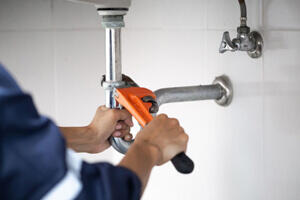Welcome to House and Home Online
House and Home Online is your one-stop shop for home appliance tips, how-to guides, troubleshooting, and QA articles. Our experts provide the latest information to help you get the most out of your appliances. We also offer home improvement articles to help you transform your living space. Let us help you make your home the best it can be.

Browse Categories
From The Blog
How to Clean Gourmia Coffee Maker: Simple Steps
How to Clean Gourmia Coffee Maker? To clean a Gourmia coffee maker, follow these steps: 1. Make sure the appliance is unplugged from the outlet before cleaning. 2. Remove the…
How Long to Cook Meatballs in the Oven: Juicy Tips for Perfect Results
How Long to Cook Meatballs in the Oven? Meatballs should be cooked in the oven at 350 degrees F for approximately 30 minutes or until fully cooked through and evenly…
How to Make Electric Grill Taste Like Authentic Charcoal
How to Make Electric Grill Taste Like Charcoal? To make an electric grill taste like charcoal, there are a few steps you can follow. Firstly, using a combination of herbs,…
How to Kill Torpedo Grass: Effective Methods and Strategies
How to Kill Torpedo Grass? To kill torpedo grass, you can use a selective herbicide called quinclorac 75 DF in Zoysia and Bermuda lawns. Spray the herbicide directly on the…
Can You Make Sourdough Bread in a Stand Mixer? Tips and Techniques for Effortless Homemade Loaves
Can You Make Sourdough Bread in a Stand Mixer? Yes, you can make sourdough bread in a stand mixer. Stand mixers are effective tools for mixing and kneading dough, including…
What Shape Placemat for Round Table: Useful Insights
What Shape Placemat for Round Table? When it comes to choosing the right placemat shape for a round table, using a round placemat is the most suitable option. This ensures…
How Long Does It Take for Clear Coat to Dry and How to Speed up the Process
How Long Does It Take for Clear Coat to Dry? The drying time of clear coat can vary depending on several factors. Higher temperatures can speed up the drying process,…
What Do the Numbers Mean on Antique Furniture: A Fascinating Guide to Decoding Hidden Secrets
What Do the Numbers Mean on Antique Furniture? The numbers on antique furniture can hold significant meaning and provide valuable information about the piece. These numbers are often part of…
How to Reset Electrolux Washing Machine for Optimal Performance: A Step-by-Step Guide
How to Reset Electrolux Washing Machine? To reset an Electrolux washing machine, there are a few different methods you can try. One method is to open the door, turn the…
Bread Maker vs Oven: Choosing the Perfect Baking Method
Bread baked in a bread maker tends to have a denser texture compared to bread baked in an oven. This is due to factors such as the confined space of…
Which Side of Rug Pad Goes Down: Essential Tips for Proper Placement and Floor Protection
Which Side of Rug Pad Goes Down? The side of a rug pad that goes down depends on the type of rug pad. Generally, for rug pads with a soft…
Can You Use Laundry Detergent in a Carpet Cleaner? Expert Advice for Effective Carpet Cleaning Solutions
Can You Use Laundry Detergent in a Carpet Cleaner? Yes, you can use laundry detergent in a carpet cleaner, specifically laundry detergent marked as ‘HE’ (high-efficiency). Regular laundry detergent may…
How to Make a Sectional Into Two Couches: A DIY Guide
How to Make a Sectional Into Two Couches? To make a sectional into two couches, start by removing the cushions to locate the corner where the sections connect. Look for…
How to Install Security Cameras: A Comprehensive StepbyStep Guide
How to Install Security Cameras? Installing security cameras requires careful consideration of the type of camera chosen and its power source. Depending on the specific camera, such as the wire-free…
Does Fans Use a Lot of Electricity? Debunking Energy Myths
Does Fans Use a Lot of Electricity? Yes, fans do use electricity. The amount of electricity consumed by a fan depends on its wattage, with a typical fan consuming between…















